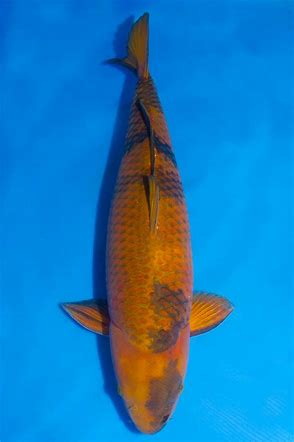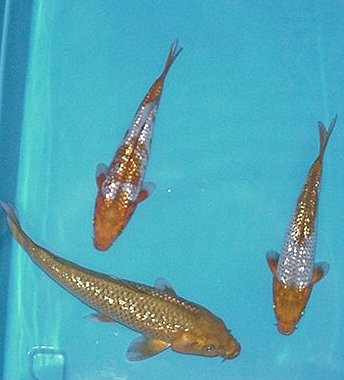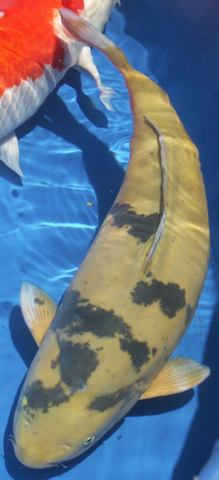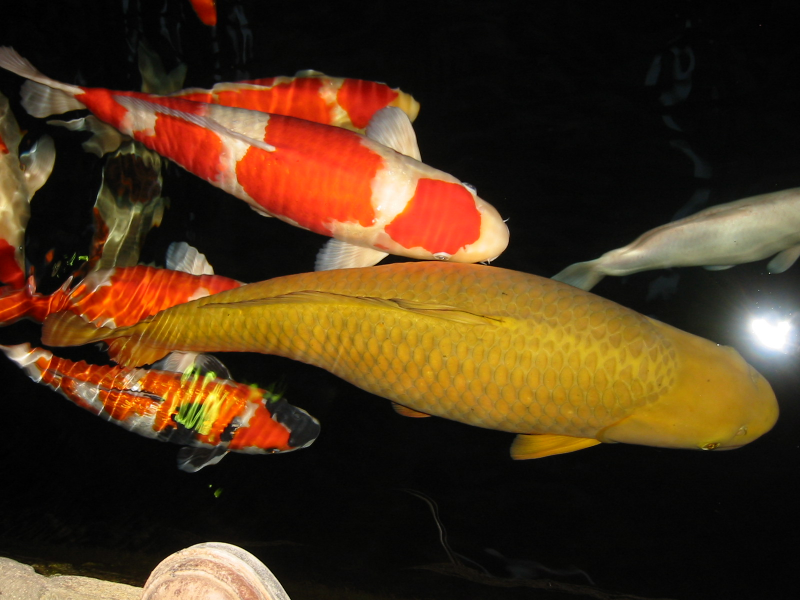Koi Type Chagoi – (Chah’-goy)
We’ve been spending a few issues of Lifestyles looking at various kinds of Koi. We talked about the Kohaku and the Showa, which are some of the most common and popular Koi. We discussed the fact that a particularly “Good Example” of any of these kinds of Koi can be very expensive.

Some Koi are not as brightly colored as the Gosanke but they are very popular nonetheless. Chagoi is just such a Koi.
The Chagoi is one of my favorite Koi because it is rendered in a uniform earth tone. The Chagoi is basically a brown Koi. Within that distinction, there are levels of quality and the discovery of valuable traits. A brown Koi is not necessarily a Chagoi. There are different qualities of Chagoi.
If the basic Chagoi is a brown Koi, what about the different shades of brown? Let’s discuss these and the other traits that make a “good” Chagoi.
Consider the basic Chagoi as a fish with personality, and you will discover a pet that is probably more intelligent that other Koi. It is almost universally agreed to be the most “friendly” of the Koi classifications because it is the most aggressive at feeding time and almost always the first fish to become hand-tame. The Chagoi is sometimes purchased SOLELY for the purposes of taming the rest of a group, and not for its color. Once one fish starts eating from your hand, it’s not hard to bring the rest about. So some folks buy a Chagoi just to “get the team started”.
Consider the basic Chagoi as a physical specimen and you will discover that much more than color makes a Chagoi “good”.
First, the fish should be big. Now, this doesn’t apply to the young fish, but you should be able to tell that the fish is fat and robust all its life. As a young fish it should be an aggressive eater and it should be larger than all the other fish of the same age. As an adult, a Chagoi is prized most highly if it fulfills a destiny of great size, for example; 40 inches or more. That’s a big Koi by any standard.
The fish should be blocky in its body shape. The base of the tail (knuckle) should be thick and fat. The head and shoulders should be broad, and no part of the fish should be slender or streamlined. The pectorals should be large and paddle shaped. There should be no splits in the fins or the dorsal fin.

The body should be covered with “fukurin” (foo’-kure-in) which is a black edging on every scale that highlights the scales and gives the fish a “fish net” pattern over the brown coloration. This may be missing in scaleless Chagois and in some of the Chagoi colors.
The eyes of a Chagoi are active and bright, the corneas should be crystal clear.
Finally, let’s consider the color and pattern.
There are two patterns of Chagoi. That would be
”With Fukurin” and “Without Fukurin” which means with or without the grey fishnet pattern defining each scale. Honestly, I don’t care which a fish has. For me, the prettiest ones don’t have Fukurin.
In every event, the more “lined up” the scales are, the better the fish. Here’s an example: Let’s say you have two Chagoi of exactly the same color and size. Both are chunky through the body and have large paddle-like pectoral fins…. To determine the difference between the two, you would look at the alignment of the scales. If the rows were nice and straight like a corncob, then the fish with the straightest, most uniform rows would be awarded the point for scale pattern.
Chagoi can also occur in a “ginrin” scalation. Ginrin (jin’-rin or geen’-leen) scalation simply means that the proteins inside the scale (under the epidermis) are thrown up in folds which refract light, giving the scales a diamond shimmer. There’s nothing quite as nice as a Rootbeer Chagoi with ginrin in its scales. Ahhhh.
The color of the Chagoi can vary. There are four colors that I am fond of.
Rootbeer Chagoi – I am absolutely sure there’s a fancy name for this, but I don’t know it. And besides, for me it’s more fun to call these a Rootbeer Chagoi. These Chagoi are brown, but it’s an intense, reddish-brown. I have seen Rootbeer Chagoi with and without fukurin and I like them both ways.


Green Chagoi – These are the best of all. There are three reasons the green Chagoi is the best. First, it tends to be the very most friendly of all the Chagoi color varieties. This is probably because the green Chagoi is also always the hungriest. Secondly, even though the green Chagoi eventually turns brown, the green gives away (early) the fact that the fish is going to have truly masterful size. The best Chagoi when they are young, for example under three to four years old, are tan-greenish. Finally, as I said, the green Chagoi eventually turns brown; but the final brown color it attains is an amber-blonde that is superior to the plain brown of the normal Chagoi. I have seen pleasing green Chagoi with and without fukurin. Personally, I like them better without.
Brown Chagoi – If you have a brown Chagoi, it probably should have fukurin (black fishnet) in it to define it from a common carp. The brown Chagoi is the most numerous of the Chagois and will make you very happy.
The fourth color is my favorite of all time. I have had three of these Koi over the years. This type of Chagoi is called a “Chagoi-Utsuri” – or “Cha-Utsuri”*. The fish is brown with a black fukurin (fishnet) pattern but the fish is bruised with black smudges. The deeper and more distinct the black, and the more organized the pattern is, the better the fish is. I have seen Chagoi Utsuris with a weak black pattern which is unevenly spread over the body and I have seen them with artistic, deep black markings evenly distributed from left to right and front to back. Such fish should be summarily bought on sight. You will rarely ever see these and regret goes a long way when you realize how rare these are.
The Chagoi has relatives which we can discuss in future issues such as the Ochiba Shagure, and the Sorogoi – but for now, as you consider getting a Chagoi, consider that while the fish has a humble color, it is in fact highly prized for redeeming traits such as size, scale alignment, and attitude. You will love your new Chagoi.
*As with any new fish, please be sure to quarantine all new fish being added to your collection.
*utsuri = oot-surr’-ee







